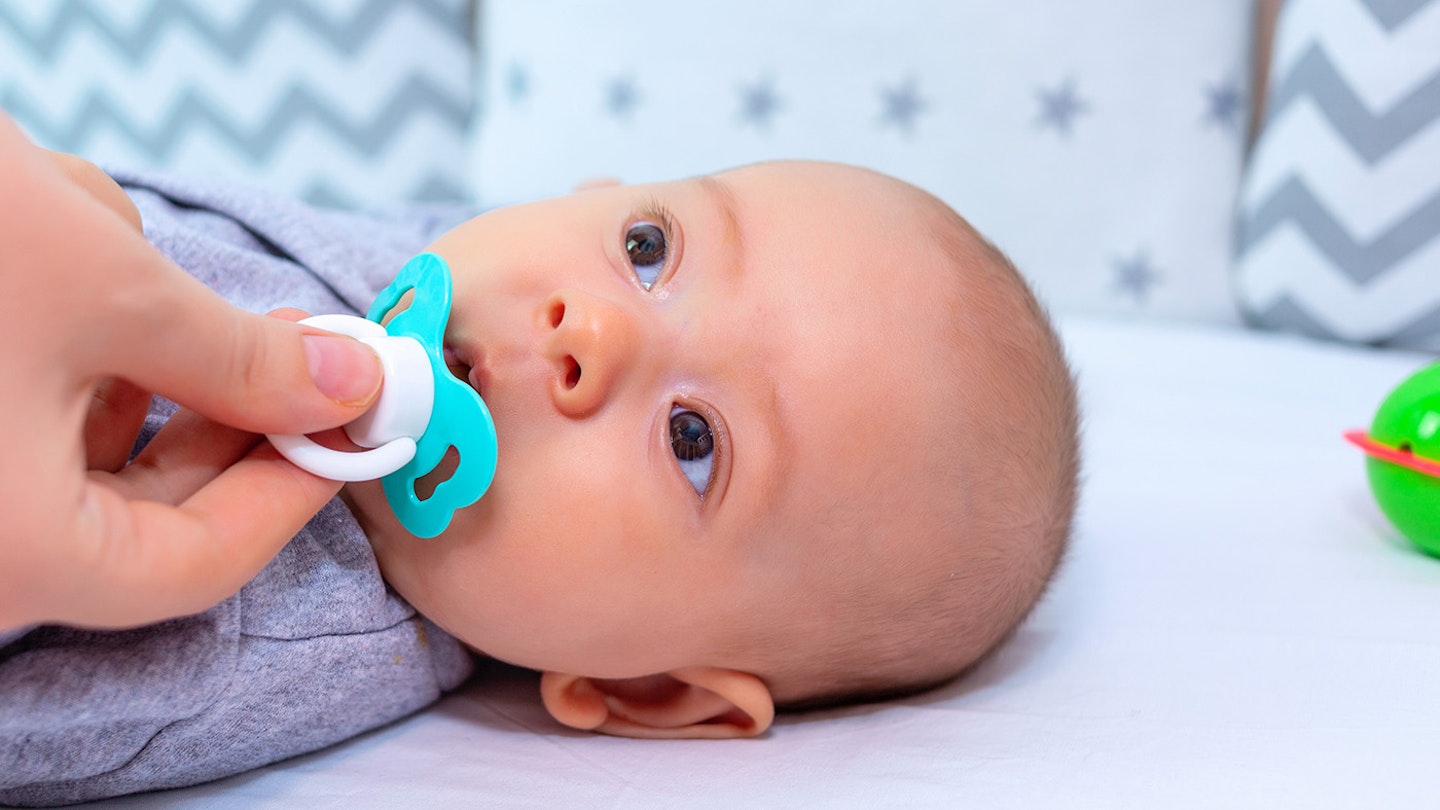Your baby may either love it or hate it, but a dummy can be a great way to help comfort your newborn, with research showing it may even protect against the risk of SIDS. But how do you get your baby to take a dummy exactly? We spoke to Lesley Gilchrist, registered midwife and co-founder of My Expert Midwife to find out.
When can you give a baby a dummy?
Great news, you can give your baby a dummy pretty much straight away: “You can give your baby a dummy from being newborn, but most healthcare professionals would recommend waiting until your baby is a few weeks old, particularly if breastfeeding,” advises Lesley.
“Breastfeeding should be well established before introducing a dummy to avoid confusion for baby between the dummy and breast. You may see this referred to as ‘nipple confusion’, which is when some babies find it difficult to go from feeding via a bottle or using a dummy to feeding at the breast. Breastfeeding is usually starting to become well established at around 4 weeks but some mums and babies may need longer." You may also want to try some of the best dummies for breastfed babies if you're concerned about nipple confusion.
Despite being able to give your baby a dummy very early on, Lesley explains that sometimes it can be beneficial to hold off a little while. “Delaying giving your baby a dummy for longer can also help you learn to identify your baby’s preferences earlier. Dummies are usually given to a baby to help them to settle when they are irritable or fractious, however when your baby is unsettled there is usually a reason and not using a dummy can help parents learn more about their baby’s behaviour and identify what the triggers are.”
Related: How to sterilise a dummy
How to get your baby to take a dummy
Make sure your baby isn’t feeling restless before trying to introduce them to a dummy: “Wait until you and your baby are feeling relaxed and comfortable before trying a dummy for the first time, this could be after a feed when they are feeling settled and ready for a nap,” says Lesley.
“Introduce the dummy to your baby by softly touching their lips with it. Some babies will take a dummy straight away, but for others it may take time or they may never enjoy having a dummy. If your baby refuses to take a dummy by turning their face away don’t continue to try to make them try it. If your baby spits the dummy out, this is also a sign they don’t want it.
“Make sure you don’t use anything to attach a dummy to your baby such as a neck cord or clipping it to their clothing as this can create a dangerous choking hazard for them. “Also, if the dummy falls out whilst they are sleeping there is no need to put it back in their mouth.”
Remember, if your baby doesn’t take a dummy it isn’t the end of the world as you can still follow other sleeping advice, such as placing your baby on their back and not smoking,to reduce the chance of SIDS. The Lullaby Trustalso says never to put anything onto your baby’s dummy to try and encourage them to take it.
